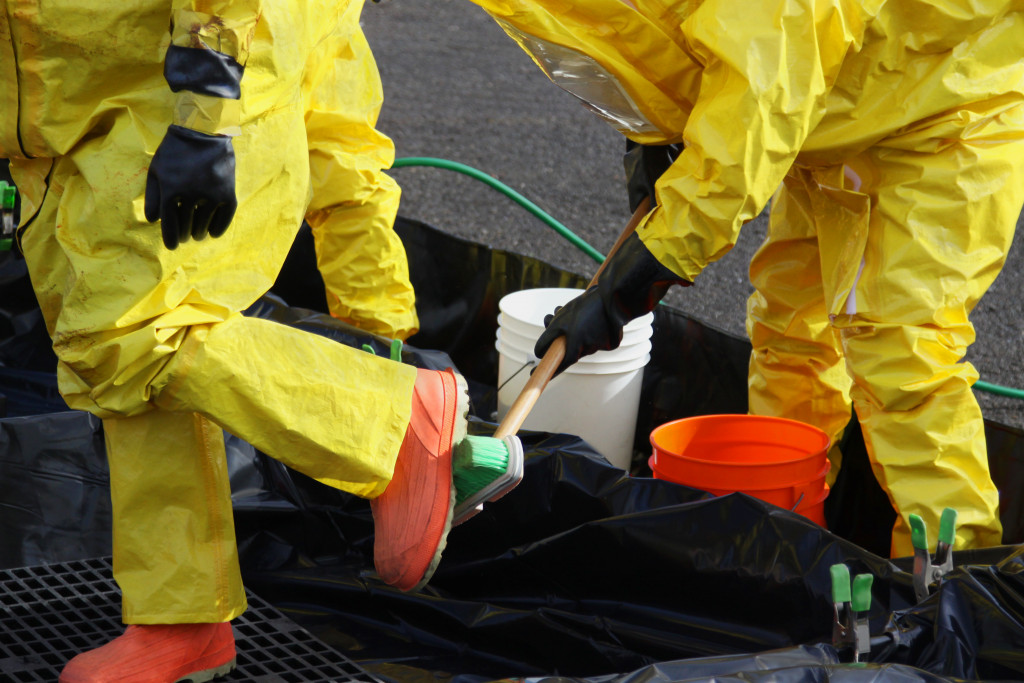Workplace safety should be a top priority of all businesses, regardless of the industry. It doesn’t matter if you’re in the creative, fashion, construction, or manufacturing industry. It pays to ensure the safety of your employees. Human loss is intolerable in any business. That’s why employers should work on minimizing safety risks in the workplace.
A safe workplace aims to protect the employees from illness and injury that can affect their overall health and their productivity. It boosts your workers’ morale and minimizes absenteeism and turnover too. Curious how you can establish a safe environment for your people? Below are a few tips to consider.
1. Perform employee training
Firstly, you need to ensure that your people know how to keep stay safe. Whether it’s in an office role behind the desk or manual labor, a person will do tons of unsafe things. If that happens on your business premises, chances are, you will be liable for it, or your operations will suffer. With that in mind, it’s a good investment to provide your team with proper training. The training should highlight what do you expect from them and what they should be doing. A workplace safety program should be conducted and improved regularly to provide refreshers for your employees.
2. Accident-proof the building
In terms of accident-proofing the building, you’ll need to focus on the type of workplace or industry you’re in. For instance, if you’re running an electronics manufacturing business, implementing ESD-safe exercises such as installing electrostatic floor coating should be your top priority. You’d want to reduce the hazards of electrostatic discharge in the workplace as much as you can. But in general, you’ll also need to work on safe work platforms, no-slip railings and stairs, and lighted walkways.
In more hazardous areas, have the appropriate lifting devices, loading arms, secure harnesses, and proper ventilation. It also pays to set up ergonomic workstations and no-slip rugs around the area. If you’re operating a business that involves hazardous materials and chemicals, ensure you have protection systems set in place.

3. Set proper emergency drills
Those emergency or fire drills you’ve participated in since you’re a kid play a huge role in safety. As annoying as it could be, such drills are a great method to familiarize a person with the right and safe exits. The same practice must be applied to your company. You have the option to organize fire emergency exercises in action.
Or you can just prepare a document that outlines your company’s emergency procedures. It should map out every emergency exit in the building, detail water spouts to extinguish possible fires, and highlight the location of smoke detectors. These details cannot only inform your staff about what to do during emergencies. You also get to assure them that the building is equipped for emergencies.
4. Provide visual safety aids
Another important element for improving workplace safety is the set of visuals you’ll install around the building. These include signs, labels, posters, color codes, or anything that warns your people of possible hazards. You can also utilize digital signage to send out safety messages, updates. Unlike static posters, this can be a more helpful visual for emergencies as you can instantly notify and warn your staff of a problem even without their mobile devices.
Digital signage is also useful for sharing safety tips in the workplace every day or week. Doing so makes your staff more familiar with the updated safety rules and regulations. It’s a good way to promote safety awareness.
5. Comply with OSHA rules
Perhaps you’re already familiar with the Occupational Safety and Health Administration (OSHA). This organization has a set of precise safety rules and regulations to guarantee that every work environment is accident-free. A safe workplace contributes to the morale and productivity of the employees, not to mention the company’s cash flow. You can consider scheduling a free on-site consultation from OSHA to confirm if your work zone is up to standards. If you’re in the agriculture, construction, or general industry, ensure you comply with the OSHA rules.
Keep in mind that these tips are general practices for workplace safety and may require specific tweaks depending on the industry you’re in. Take a careful and meticulously look at your work environment and the hazards that may occur. Encourage your management to implement a proactive plan to improve workplace safety and avoid accidents that can make you lose the trust of your employees and the entire industry.

